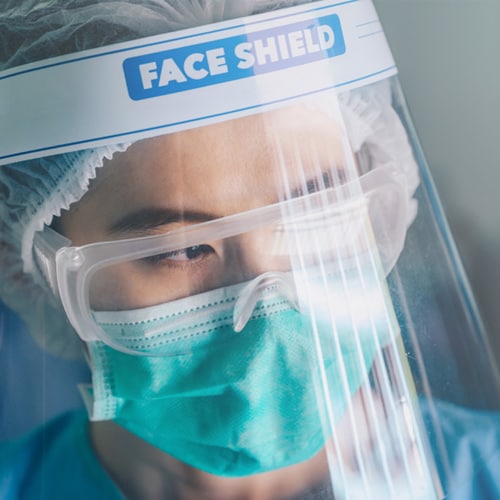COVID-19: How to manage dental emergencies and urgent cases during the pandemic.
During the COVID-19 pandemic, dental practitioners in many locations have been required to close practices to all but urgent or emergency care cases (as defined by the American Dental Association (ADA) here). When treating such patients, special precautions must be taken within your practice to minimize the risk of disease transmission. These include (but are not limited to):
1. Pre-screening
The ADA recommends remotely pre-screening patients for COVID-19 symptoms before determining whether an appointment should be made for a dental office visit. If one is made, the patient should be screened again on the day of the appointment prior to arrival.
Common symptoms consistent with COVID-19 include:
- Fever
- Sore throat
- Cough
- Difficulty breathing
If an urgent or emergency patient has a fever strongly associated with their dental diagnosis, but no other symptoms of COVID-19, they can be treated in-practice provided that appropriate infection control protocols and personal protective equipment (PPE) are in place. If the patient has symptoms of acute respiratory illness, they may be treated if the appropriate Transmission-Based Precautions are in place, or referred for care where such precautions are available.
2. Preparation of Patient Areas
When offering appointments, try to schedule them as far apart as reasonably possible to minimize patient contact in waiting areas, and ask that your patients arrive on time. Space seating as far apart as possible to facilitate social distancing, remove anything that can be touched by others and is difficult to disinfect (e.g., magazines, pamphlets, toys), and provide supplies for personal hygiene. The ADA Interim Guidance recommends 60-95% alcohol-based hand rubs, tissues, and no-touch receptacles in waiting rooms and reception areas.
3. Arrival
The patient should be screened for symptoms again on arrival before entering the practice. You may encourage them to wait for their appointment in their vehicle, particularly if your waiting area does not allow for adequate social distancing.
The ADA advises against patients bringing companions to an appointment, except for where strictly necessary (e.g., pediatric patients, people with special needs). Companions should also be screened for symptoms on arrival and, according to the ADA Interim Guidance guidance, be prohibited from entering the dental operatory.
4. PPE
The ADA recommends using the highest level of PPE available during patient care, as stated in its interim mask and face shield guidelines. Gloves and appropriate protective attire must also be worn. Separately, the ADA refers practitioners to the CDC’s instructions for the appropriate donning and doffing of PPE equipment.
With PPE supplies overstretched, both the ADA and the CDA caution that practitioners should expect PPE to be unavailable at some point. With this in mind, the CDC has produced extensive guidance for monitoring PPE supply and optimizing use in healthcare settings.
5. Pre-Procedural Rinsing
SARS-CoV-2 may be vulnerable to oxidation, so ADA guidelines currently recommend pre-procedural rinsing with a 1.5% hydrogen peroxide mouth rinse, such as Colgate Peroxyl Mouthwash, or with 0.2% povidone-iodine.
6. Aerosol/Droplet Reduction
The ADA advises that procedures and equipment that generate aerosols or droplets should be minimized to reduce transmission risk. Examples include high-speed handpieces, 3-in-1 syringes, and intra-oral dental radiographs. If a treatment generates an aerosol, a rubber dam should be used to isolate the treatment site.
7. Hand Hygiene
As usual, thorough hand hygiene protocols should be followed before donning and after removing medical or surgical gloves. For non-surgical (routine) procedures, provided hands are not visibly soiled, the CDC recommends using an alcohol-based hand rub (ABHR) with greater than 60% ethanol or greater than 70% isopropanol. Soap and water must be used for at least 20 seconds if hands are soiled, as well as before eating and after using the restroom. For surgical procedures, surgical hand antisepsis should be performed in accordance with the CDC guidelines.


Was this article helpful?
If you’d like a response, Contact Us.